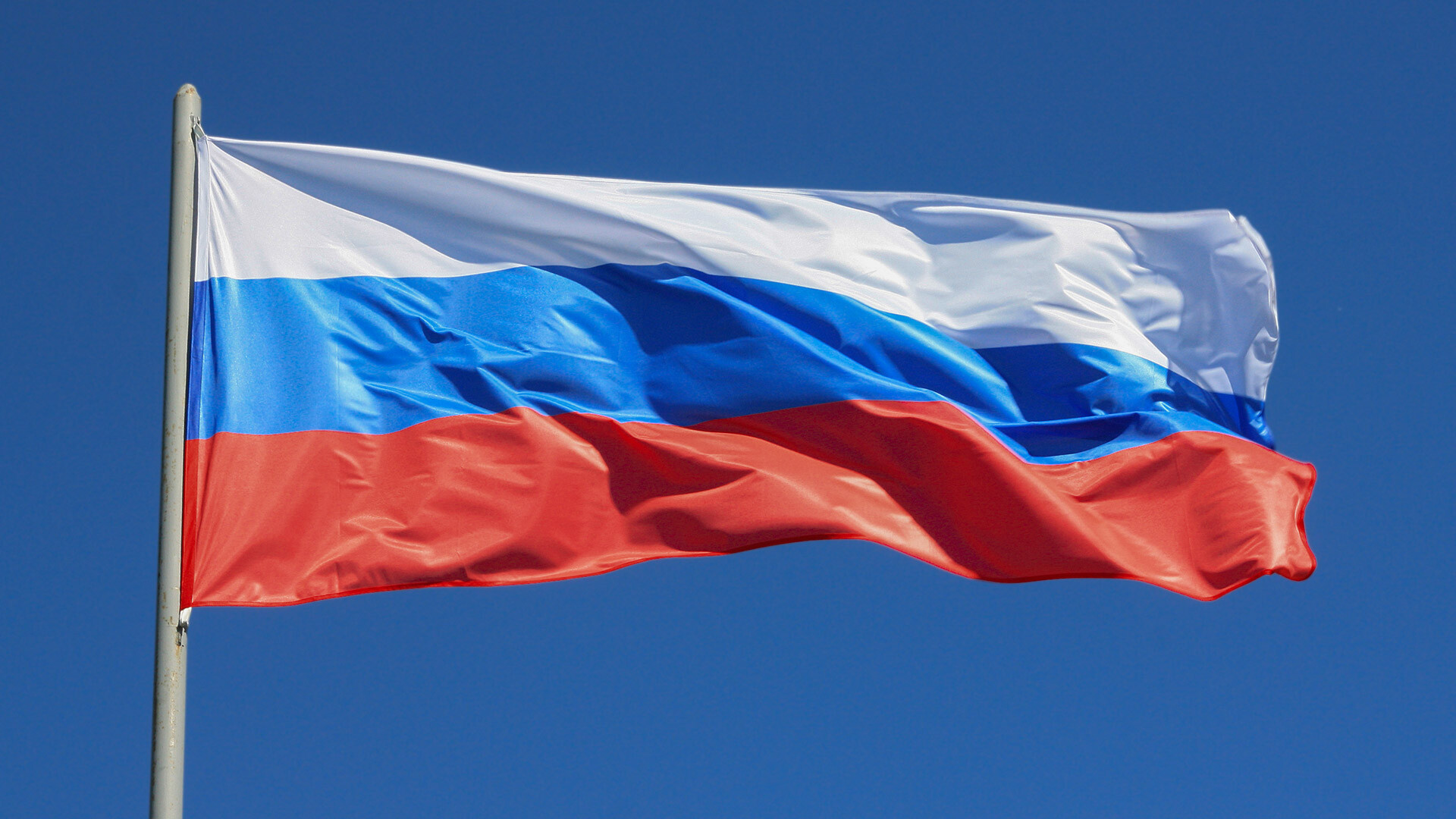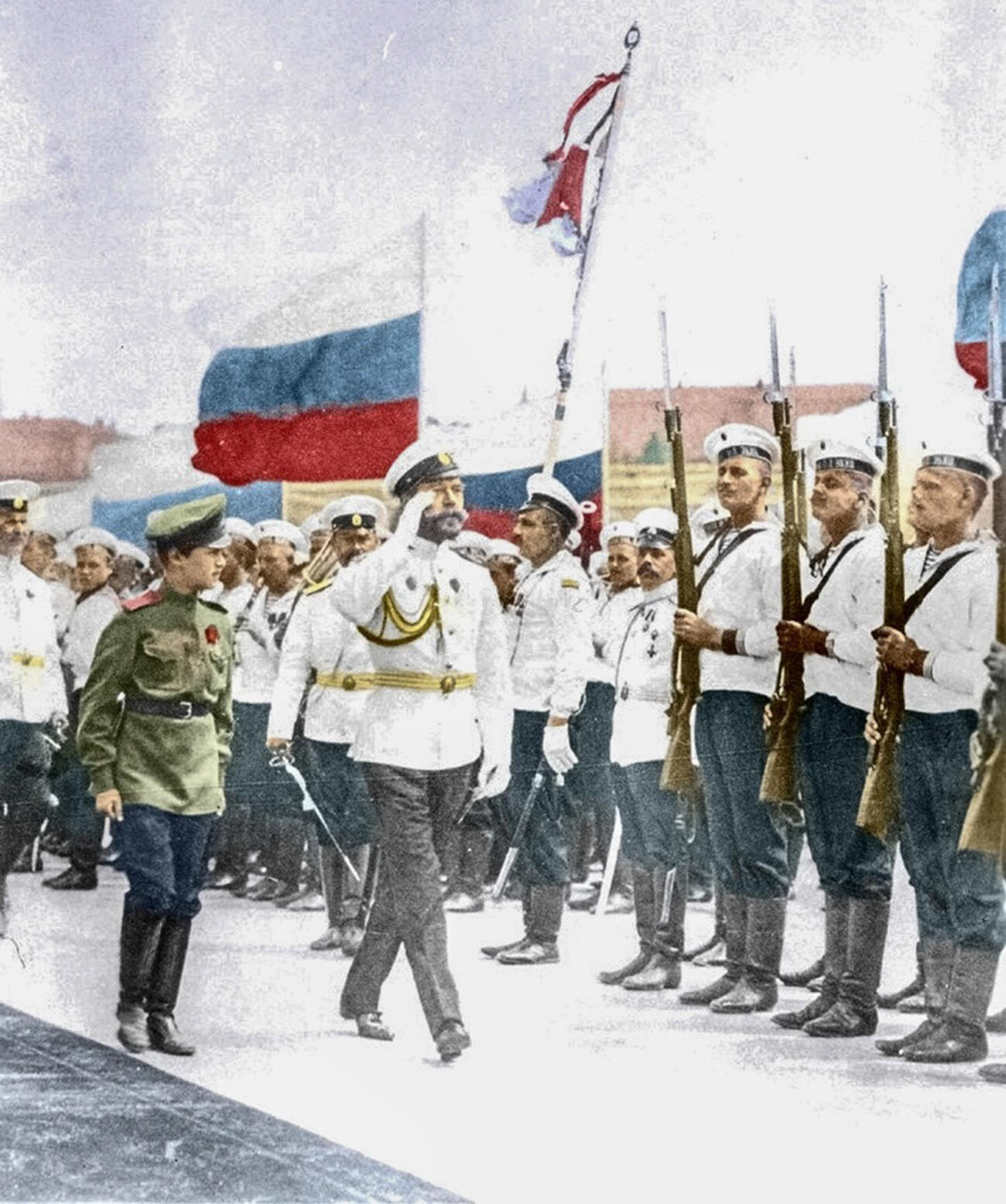
5 facts about the Russian flag

1. The flag emerged under the rule of Peter the Great
 The oldest copy of the ‘Flag of the Tsar of Muscovy’
The oldest copy of the ‘Flag of the Tsar of Muscovy’
The year 1668 is considered by historians to be the birth year of the Russian flag. The first ever Russian-built warship ‘Oryol’ was flying a prototype of this flag back under the rule of Tsar Alexis I. However, its precise look and the position of colors are lost to history. The only mentions are that red, white and light blue fabrics were used to sew it.
The current look of the Russian flag was fully formed under Peter the Great – a panel with white, blue and red fields on it was then called ‘Flag of the Tsar of Muscovy’. This version of the flag from 1693, with a double-headed eagle, was first raised on the ship ‘Saint Peter’. Later on, a different naval ensign was adopted for military ships. The tricolor was instead raised, by decree of Peter the Great, on all trade and other civilian ships, including those of explorers and officials.
2. Forgotten for almost 70 years
 Nicholas II set the white-blue-red flag as a national Russian flag in 1896
Nicholas II set the white-blue-red flag as a national Russian flag in 1896
The white-blue-red flag became an official national flag under Tsar Nicholas II. Russian authorities had decided to revive this “traditional Russian” national flag as a symbol of unity of the new tsar with the people. However, after the 1917 Revolution, the Bolsheviks abolished the tricolor, along with all other symbols of the former Empire. Revolutionary red became the color of the new Soviet state. A red flag with a hammer and sickle design was adopted as the USSR State Flag in 1922 – as a symbol of the heroic struggle of the Soviet people, led by the Communist Party of the Soviet Union, for socialism and communism. The Russian tricolor would return again only in the 1990s.
3. After the dissolution of the USSR, the flag returned in 1991
 President of the Russian SFSR Boris Yeltsin wave the national flag during the rally near the Russian White House
President of the Russian SFSR Boris Yeltsin wave the national flag during the rally near the Russian White House
August 22 is marked as National Flag Day in Russia. This day is considered to be the date of the revival of our historic tricolor in modern history. On August 18-21, 1991 the USSR suffered the August Coup, basically an attempt at a coup d’état. Several Communist Party members formed the so-called ‘State Committee on the State of Emergency’ (GKChP) and proclaimed themselves a new government.
One of their goals was to not allow the USSR to collapse. But the authorities of the Russian Soviet Federative Socialist Republic resisted the coup and, among them – its president Boris Yeltsin. In his address to the nation, he said that such violent methods “return us to the Cold War era and to the isolation of the Soviet Union from the global community”.
Thousands of people gathered at the White House and Boris Yeltsin raised the Russian white-blue-red tricolor. August 22, 1991, is considered to be the day of the GKChP’s defeat – and this is also the date when, three years later, Yeltsin declared the ‘National Flag Day’.
4. There is a special law about the flag
 An oath taking ceremony in Sochi's Olympic Park.
An oath taking ceremony in Sochi's Olympic Park.
The first decree on the state flag was signed by Boris Yeltsin in 1993; in 2000, Vladimir Putin signed the Federal Constitutional Law ‘On the State Flag of the Russian Federation’.
The law clearly stipulates what the flag should look like. “The national flag of the Russian Federation represents a rectangular panel from three equal horizontal strips: top - white, average - dark blue and bottom - red color. The attitude of width of the flag to its length is 2:3,” the law states.
The law also indicates where the image of the flag can and can’t be used. The flag is always raised over State institutions of federal importance. It’s the official symbol of the Russian Federation and the regions of the Federation are not allowed to use it as the basis for their own flags.
On days of mourning flag poles fly a black ribbon at the top. Flag desecration entails criminal liability – up to imprisonment.
5. The meaning of the colors is unclear

In the 19th century, it was believed that the white color symbolizes freedom, the blue color is the color of Virgin Mary and the red color symbolizes state authority. It’s unclear what meaning Peter the Great put into the flag colors; there are many explanations offered for every color individually and for the composition in its entirety.
One of the most popular modern versions claims that the white color symbolizes peace and purity, the blue color – faith and honesty and the red color – strength, courage and blood spilled for the Fatherland.
Read more about the meaning of the colors here.











